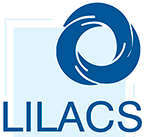Barreras de acceso a los servicios de salud para mujeres transgénero
DOI:
https://doi.org/10.19136/hs.a20n1.3654Resumen
Objetivo: Identificar y clasificar, a partir de una revisión de textos científicos publicados, las barreras y algunos factores asociados con el acceso a los servicios de salud en las MT. Material y Método: Se realizó una revisión de literatura en bases electrónicas: LILACS, PubMed y SciELO, para el periodo 2005-2019. Se determinaron palabras clave a partir de los modelos de acceso a servicios de salud de Andersen y Levesque. Además, se retomaron resultados de dos encuestas realizadas a mujeres transgénero (MT) en México, durante 2012 y 2013. Para el análisis de los artículos se consideró: título, autores, diseño de estudio, objetivo, abordaje metodológico y resultados obtenidos y discusiónResultados: Inicialmente se identificaron 143 artículos, de los cuales 25 abordaban el tema de interés. Los 25 artículos y ambos reportes de encuestas fueron incorporados a una matriz de Excel para ser analizados. Se identificaron cuatro principales categorías para las barreras de acceso a los servicios de salud en MT: individuales, interpersonales, estructurales y financieras. Conclusiones: Se concluye que es posible agrupar las barreras de acceso a los servicios de salud en MT en cuatro grandes categorías: individuales, interpersonales, estructurales y financieras. Lo anterior resalta al estigma como un eje importante que atraviesa por las cuatro categorías, por lo que abordarlas requiere un cierto grado de sensibilidad sobre la deuda histórica, consecuencia de estigma y discriminación, que existe hacia esta población.Descargas
Referencias
World Health Organization. Ensuring an inclusive global health agenda for transgender people. [cited 2019 May 8]; Available from: http://dx.doi.org/10.2471/BLT.16.183913
Cali D, Domínguez CM, Ramírez SV, Arrivillaga-quintero M. Acceso a servicios de salud en mujeres transgénero de la ciudad de Cali , Colombia Access to Health Services for Transgender Women in the City of Cali ,. 2018;20(118):296–309.
Coleman E, Bockting W, Botzer M, Cohen-Kettenis P, Decuypere G, Feldman J, et al. Standards of Care for the Health of Transsexual, Transgender, and Gender-Nonconforming People. Int J Transgenderism [Internet]. 2012 [cited 2019 Apr 10];7(4):165–232. Available from: http://www.tandfonline.com/loi/wijt20http://dx.doi.org/10.1080/15532739.2011.700873
Grant JM, Mottet LA, Justin Tanis J, with Jack Harrison Jody Herman DmL, Keisling M. Injustice at Every Turn A Report of the National Transgender Discrimination Survey [Internet]. [cited 2019 Apr 12]. Available from: www.TheTaskForce.org
Deutsch MB. Guidelines for the Primary and Gender-Affirming Care of Transgender and Gender Nonbinary People: Guidelines for the Primary and Gender-Affirming Care of Transgender and Gender Nonbinary People [Internet]. Center of Excellence for Transgender Health. 2016 [cited 2019 Apr 12]. Available from: http://transhealth.ucsf.edu/trans?page=protocol-terminologyth
Cruz TM. Assessing access to care for transgender and gender nonconforming people: A consideration of diversity in combating discrimination. Soc Sci Med [Internet]. 2014 [cited 2019 Apr 10];110:65–73. Available from: http://dx.doi.org/10.1016/j.socscimed.2014.03.032
Snelgrove JW, Jasudavisius AM, Rowe BW, Head EM, Bauer GR. medicine ” : A qualitative analysis of physician-side barriers to providing healthcare for transgender patients. 2012;
Aday LA, Andersen R. A framework for the study of access to medical care. Health Serv Res. 1974;208–20.
Levesque J-F, Harris MF, Russell G. Patient-centred access to health care: conceptualising access at the interface of health systems and populations [Internet]. 2013 [cited 2019 Apr 28]. Available from: http://www.equityhealthj.com/content/12/1/18
Levesque J-F, Harris MF, Russell G. Patient-centred access to health care: conceptualising access at the interface of health systems and populations [Internet]. 2013 [cited 2019 Apr 22]. Available from: http://www.equityhealthj.com/content/12/1/18
Nemoto T, Operario D, Keatley J, Nguyen H, Sugano E. Promoting Health for Transgender Women : Transgender Resources and Neighborhood Space ( TRANS ) Program in San Francisco. 2005;95(3):382–4.
Logie CH, Abramovich A, Schott N, Levermore K, Logie CH, Abramovich A, et al. Navigating stigma , survival , and sex in contexts of social inequity among young transgender women and sexually diverse men in Kingston , Jamaica. Reprod Health Matters [Internet]. 2018;00(0):1–12. Available from: https://doi.org/10.1080/09688080.2018.1538760
Baral SD, Poteat T, Strömdahl S, Wirtz AL, Guadamuz TE, Beyrer C. Worldwide burden of HIV in transgender women : a systematic review and meta-analysis. Lancet Infect Dis [Internet]. 2013;13(3):214–22. Available from: http://dx.doi.org/10.1016/S1473-3099(12)70315-8
Hatzenbuehler ML, Phelan JC, Link BG. Stigma as a Fundamental Cause of Population Health Inequalities. 2013;103(5):813–21.
Poteat T, Scheim A, Xavier J, Reisner S, Baral S. Global Epidemiology of HIV Infection and Related Syndemics Affecting Transgender People. 2016;72:210–9.
Hughto JMW, Rose AJ, Pachankis JE, Reisner SL. Health Barriers to Gender Transition-Related Healthcare : Identifying Underserved Transgender Adults in Massachusetts. 2017;2:107–18.
Colchero A, Cortés MA, Sosa-rubí S, Romero M, Bautista S, Vega H, et al. Principales resultados de la encuesta de salud con sero-prevalencia de VIH a mujeres transgénero en la Ciudad de México. 2013;1–8.
World Health Organization. TRANSGENDER PEOPLE AND HIV POLICY BRIEF [Internet]. 2015 [cited 2019 May 13]. Available from: www.who.int/about/licensing/copyright_form/en/index
Bautista-arredondo S, Cortés A, Sosa-rubí S. Reporte Encuesta de Seguimiento HSH y TTS de Fondo Mundial. 2014.
Consejo Nacional para Prevenir la Discriminación (CONAPRED). Encuesta Nacional sobre Discriminación en México [Internet]. 2011 [cited 2019 Apr 21]. Available from: https://www.conapred.org.mx/documentos_cedoc/Enadis-2010-RG-Accss-002.pdf
Elizabeth A, Solís U, Wilhelm A, García V, Cázares V. Expresión y trabajo de los Muxe ’ del Istmo de Tehuantepec , en Juchitán de Zaragoza , México Expression and work of the Muxe ’ from the Isthmus of Tehuantepec in Juchitan de Zaragoza , Mexico Resumen Método Resultados Discusión. 2017;9(2):502–27.
CONAPRED - Boletín:2018 - 90. LA IDENTIDAD DE GÉNERO DE PERSONAS TRANS NO DEBE CONSIDERARSE UN TRASTORNO MENTAL [Internet]. [cited 2019 Apr 21]. Available from: https://www.conapred.org.mx/index.php?contenido=boletin&id=1153&id_opcion=103&op=213
Institute of Medicine (US) Committee on Lesbian GB and THI and RG and O. The Health of Lesbian, Gay, Bisexual, and Transgender People [Internet]. The Health of Lesbian, Gay, Bisexual, and Transgender People: Building a Foundation for Better Understanding. National Academies Press (US); 2011 [cited 2019 Apr 13]. Available from: http://www.ncbi.nlm.nih.gov/pubmed/22013611
Roberts TK, Fantz CR. Barriers to quality health care for the transgender population. Clin Biochem [Internet]. 2014; Available from: http://dx.doi.org/10.1016/j.clinbiochem.2014.02.009
Obedin-Maliver J, Goldsmith ES, Stewart L, White W, Ma E, Tran S, et al. Lesbian, Gay, Bisexual, and Transgender-Related Cont





























